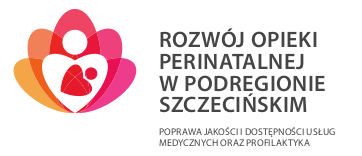PSYCHOMOTOR DEVELOPMENT OF THE INFANT IN THE FIRST YEAR OF LIFE
The first year of life is the period of the fastest and biggest changes in the child’s life. The little one turns from the helpless newborn into a moving toddler, able to signal its needs and emotions. The first year of life means also the fastest growth. Within this period, the baby triples its birth weight. During this time, the child’s progress takes place in all areas, from motor to mental development. In the first days of its life, the child adapts to live outside the mother’s abdomen. We observe the so-called transitional conditions, of various intensification which do not require any treatment.
A healthy baby initially does not gain weight, but loses it; baby’s skin takes on yellowish tint, and the first stools are green and loose. Mammary glands of both sexes’ children are swollen and sometimes secretion similar to milk appears. Red pimples with white centres sometimes appear on a newborn’s skin. The navel which has not come off may happen to bleed. All these symptoms gradually disappear during the first month of life. The period of child’s very rapid development begins. Every month, the baby acquires new skills, broadens its interests, enters into fuller relations with the world around it.
A two-month old child observes and tracks the toys located in front of its face, reacts to familiar sounds, likes its mother’s voice.
After another month, lying on its tummy, the baby props up on its hands and raises its head, and it can hold up the head up to approximately 1 minute; also the motor development of hands accelerates – the baby can grab the toy given to it.
After the third month of life, the infant begins to smile, even without understanding the gesture, it imitates its mother’s lips.
Another month brings new skills. The four-month old baby really likes to play, puts every toy in its mouth and loves when its little hands are in motion. When happy, it cheers. It holds its head steadily. When pulled to upright position, raises its head, and holds it firmly. Before the age of six months, the little one does the next big step in its development – starts to sit, initially with support, which in time becomes less and less needed so that at the end of the first half year it does it on its own.
A six-month old baby reaches for toys it finds interesting and very willingly shifts them from hand to hand; in the second half year of its life, the baby practices gripping, initially with its fingers and straightened thumb and at the end of the first year, the baby masters difficult grasping of smaller and smaller items, using its index finger and thumb.
In the second half year, the speech develops noticeably; the baby begins to laugh out loud, it loves songs and rhythmic rhymes. The fun with producing sounds begins – initially, the first repeated syllables, with the time it squeals and whispers; uttered syllables become more complicated and at the end of the first year they change into first understandable words.
The second half year is also the time to learn how to move, firstly from the tummy to the back and vice versa, and to start crawling, and at the end of the first year to make the first steps on its own.
During one year, the helpless newborn, totally dependent on the mother, turns into a curious, energetic child who can move on its own, signal its emotions and needs. A year old child understands a lot and eagerly learns new things; it is also able to give a lot of its caregivers. The first year of the child’s life is so important, because from that moment on, the child’s development will never be so fast, and the child will only deepen and develop its previously acquired skills.




